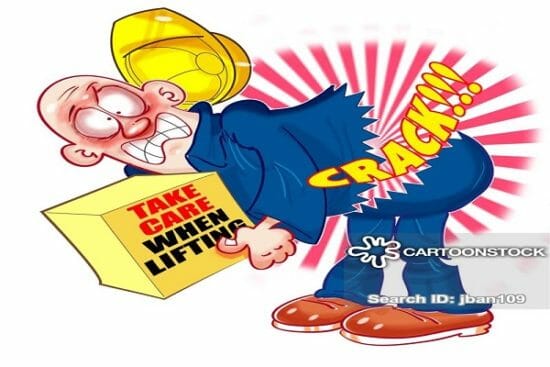No products in the cart.
- Course No E – 1727
- PDH Units: 2
Course No E - 1727
PDH Units: 2
- Course No E – 1727
- PDH Units: 2
Course No E - 1727
PDH Units: 2
Intended Audience: All Engineers.
PDH UNITS: 2
Manual materials handling (MMH) is a component of many jobs and activities in our lives. Typically, it involves lifting, lowering, pushing, pulling and carrying objects by hand. Loading and unloading trucks, carts, boxes or crates; moving parts or assemblies from one place to another; loading paper to the copier or picking binders from an overhead shelf; lifting patients from a bed or transporting them in a wheelchair are typical MMH activities found in work settings. Likewise, carrying groceries to the kitchen or garbage cans to the curb, picking up sticks in the yard or mowing the lawn, or simply holding a child in your arms are forms of MMH we encounter at home. This is by no means an all-inclusive list of MMH tasks. Manual materials handling permeates all aspects of life on and off the job. Even with all the technology available today, manual materials handling is still with us. The one thing all these tasks have in common is the potential to result in some adverse health effect, from simple cuts, bruises and sore muscles to more serious conditions related to low back pain (LBP). Almost half of all low back injuries are related to lifting, about another 10 percent are associated with pushing and pulling activities, and another 6 percent occur while holding, wielding, throwing or carrying materials. The U.S. Department of Labor’s Bureau of Labor Statistics reports musculoskeletal disorder (MSD) cases accounted for 34 percent (388,060) of all injury and illness cases in 2012. Laborer and freight, stock, and material movers had the highest number of MSD cases and an incidence rate of 164 per 10,000 full-time workers—up from 140 in 2011. Workers injured their backs in 36 percent of the sprain, strain and tear cases. MSDs involving the back required a median of seven days to recuperate and accounted for 41 percent of the MSD cases. Considering the number of cases involving MSDs, it is easy to see that this is a significant problem that concerns us all. This course introduces methods to avoid injuries related to material handling. This course is based on the publication “A Guide to Manual Materials Handling and Back Safety” by the NC Department of Labor. The technologies and methodologies described in this course are intended as a guideline for safely handling and lifting materials.
Learning Objectives:
At the successful conclusion of this course, you’ll be able to identify and discuss:- Manual Materials Handling (MMH) and Risk Analysis
- Education and Training for Proper Lifting
- Lifting Hazard Identification
- Pushing, Pulling and Transporting Loads on Hand Drawn Transport Devices
- Hazard Control Prevention, and the effects of Stretching and Strengthening
- Stretching, Strengthening and Wellness
Once completed, your order and certificate of completion will be available in your profile when you’re logged in to the site.







